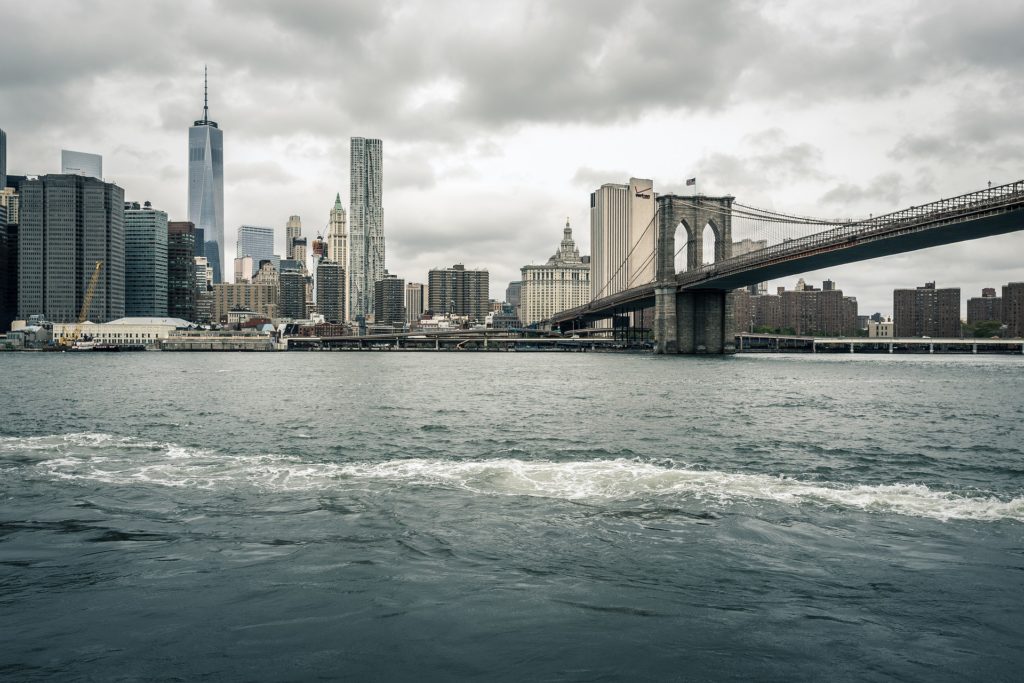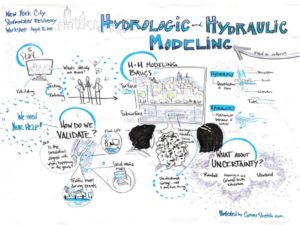
On May 14, New York City released its first city-wide analysis of flooding caused by extreme rainfall events, based on research by an academic collaboration including Colorado State University’s One Water Solutions Institute.
 CSU researchers partnered with Brooklyn College, Stony Brook University, the Stevens Institute of Technology, Jupiter Consulting LLC and the Urban Systems Lab at The New School to complete one of the largest and most comprehensive stormwater studies ever conducted. The findings of their New York City Stormwater Resiliency Study now will be implemented through the city’s Stormwater Resiliency Plan, intended to prepare the most populous city in the U.S. for increased rainfall in the future.
CSU researchers partnered with Brooklyn College, Stony Brook University, the Stevens Institute of Technology, Jupiter Consulting LLC and the Urban Systems Lab at The New School to complete one of the largest and most comprehensive stormwater studies ever conducted. The findings of their New York City Stormwater Resiliency Study now will be implemented through the city’s Stormwater Resiliency Plan, intended to prepare the most populous city in the U.S. for increased rainfall in the future.
“The data from this effort will inform future infrastructure design to optimize drainage in a wetter and more volatile century,” the city stated in a press release that acknowledged the academic partners.
The ambitious project was a good fit with the goals and strengths of the One Water Solutions Institute, which brings together researchers from across campus to solve water-related problems for public and private stakeholders.
“This is a perfect example of how skills we develop in the institute can be used to solve really important challenges that confront communities,” said Mazdak Arabi, director of the institute and professor in the Department of Civil and Environmental Engineering. “We try to solve real-world problems – that’s the mission of land-grant universities.”
For the NYC Stormwater Resiliency Study, CSU faculty, scientists and students worked with government agencies and private sector partners to develop models that could simulate both city-wide and neighborhood-scale responses to extreme rainfall. CSU ran all of the models, which had never been used at such large scales, and tested different stormwater management strategies for various climate scenarios. The team then summarized the results in maps, charts, illustrations and figures that would be understandable and useful to decision-makers.

“To the best of my knowledge, nothing like this had ever been done before,” Jennifer Cherrier, principal investigator on the study and a professor at Brooklyn College, said for a Source story in October. “I immediately knew I had to partner with Mazdak and his team because of their collective expertise, Mazdak’s aligned vision of generating actionable science and the short turnaround time to complete the project.”
Arabi and Tyler Dell, former director of CSU’s Colorado Stormwater Center, led the modeling effort, and several graduate students contributed to the study.
While preparing New York City for climate change and sea-level rise is the primary outcome from the study, Arabi lists additional benefits for his team.
“OWSI is a better institute because now we have better skills that we’ve gained through this project, and our students got more comprehensive and holistic training that involved not only research but also communication and engagement with the private sector and governmental agencies,” Arabi said.